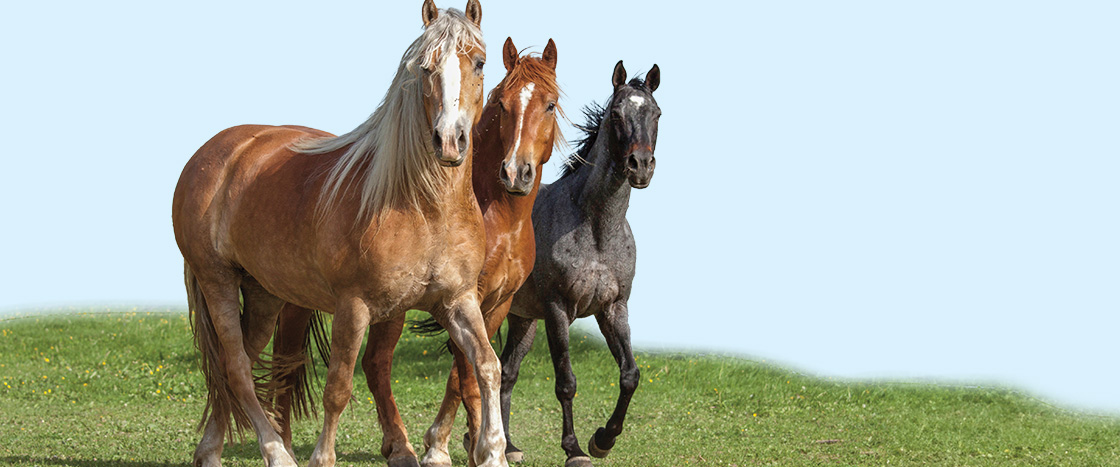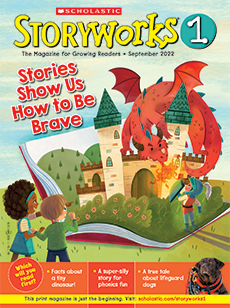Some horses are much taller than a person. A mini horse is a very small horse.

Giddyup! Get 4 Horse Facts
You are about to read a true story about a little horse that needed a friend. First, learn four facts about horses.
Learning Objective: Students will build background information about horses to prepare for the Big Read-Aloud.
Standards
1. They come in different sizes.
2. Some live on a ranch.
A horse ranch is a place for horses. They run, eat, and sleep there.
3. They are smart.
Horses can be trained for riding. They can understand what you tell them to do.
Giddyup, horses!
4. Horses need friends.
Horses like to be with other horses. They stay in a herd. That is a group of animals.
More About the Article
English Language Arts Focus
Key details
Science Focus
Animal behavior
Implementation
- Whole group
Pairings and Text Connections
- In this issue: “Big Read-Aloud: The Lonely Little Horse”
- From the Storyworks archive: “Picture This!: Giddyup, Horse and Pup!” (February 2024)
- Suggested books: The Great Adventures of Dally and Spanky by Francesca Carsen
Before-Reading Resources
- Vocabulary slideshow (5 minutes) mini horse, ranch, trained, herd
Suggested Reading Focus
Build background knowledge (20 minutes)
- Activate children’s background knowledge by asking them where they have seen horses before and what they know about them.
- Preview the article by pointing out the nonfiction text features. Look at each picture and ask children what they notice.
- Read the article. Stop to check for comprehension with each of the bolded vocabulary words.
- Ask students to recall something they learned from the words or pictures in the article. Summarize their learning through discussion or on chart paper.
After-Reading Skills Practice
Skills: Letter recognition; main idea
